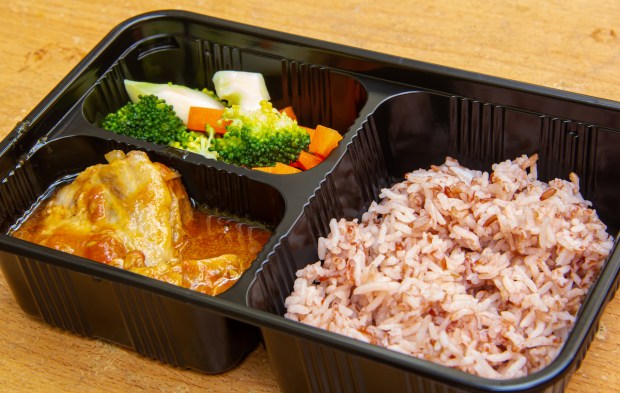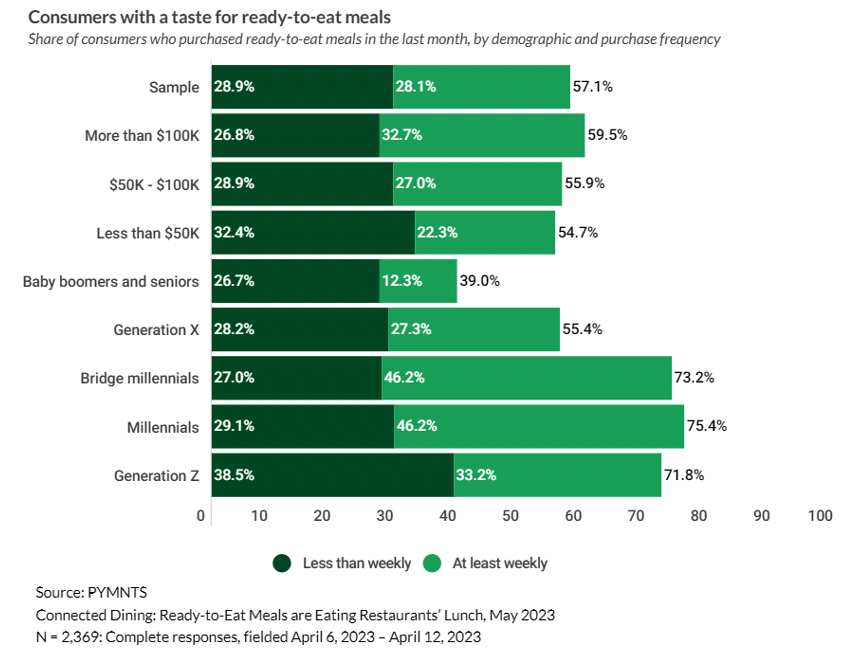Restaurant Visits Decline as Consumers Buy Ready-Made Meals Weekly

Restaurant purchases have ebbed to their lowest levels in over a year as food prices continue to climb.
Research carried out for PYMNTS’ “Connected Dining” report noted that 58% of consumers made restaurant purchases in June, representing a 9 percentage point drop from May — and the steepest difference in monthly purchase percentages since last November.

Additional data from the same report noted that consumers both pulled back on how often they visited restaurants in June and how much they spent when doing so. In June, the average spend per visit averaged $24.30 per person, a nearly $2 drop from the previous month and the lowest spending amount for 2023 so far.
 The main driver behind these decreased visits may well be rising menu prices. After all, food inflation may be slowing, but it hasn’t stopped or reversed. Higher prices from restaurants’ suppliers often get passed down to consumers, and the need to cover also-increasing restaurant overhead may lead restaurants to make these markups even higher. Nevertheless, some quick-service restaurants (QSRs) are bolstering their drive-through and carryout options, pivoting to lean on the convenience of their meals as their on-site numbers dip.
The main driver behind these decreased visits may well be rising menu prices. After all, food inflation may be slowing, but it hasn’t stopped or reversed. Higher prices from restaurants’ suppliers often get passed down to consumers, and the need to cover also-increasing restaurant overhead may lead restaurants to make these markups even higher. Nevertheless, some quick-service restaurants (QSRs) are bolstering their drive-through and carryout options, pivoting to lean on the convenience of their meals as their on-site numbers dip.
Panera, for one, is going a different route and partnering with grocers instead, while Red Lobster is producing its own frozen line. This mentality may be sound as PYMNTS’ May “Connected Dining” report found that 28% of consumers purchase ready-made meals at least weekly.
 Some grocers have been racing to meet the consumer demand for the convenience found in ready-made meals. Whole Foods is increasing its ready-made meal selection, as is Costco.
Some grocers have been racing to meet the consumer demand for the convenience found in ready-made meals. Whole Foods is increasing its ready-made meal selection, as is Costco.
As Kroger CEO Rodney McMullen said on a March earnings call, “Our customers are looking for more ways to stretch their budget. The gap between food at home and food away from home spending grew in the fourth quarter as more customers gravitated toward affordable meal solutions that restaurants simply can’t provide. Our research shows that cooking at home is three to four times less expensive than dining out.”
Consumers have not given up on the convenience that not having to cook brings, but instead of going out to eat, they may be shifting their behavior and buying these meals from grocers. And, as food inflation continues to rise, consumers may continue to mix ready-made meals into their prepared food rotation to avoid any extra costs eating in could incur.

